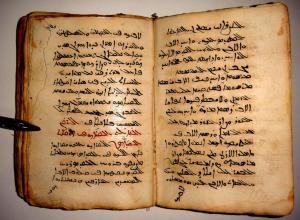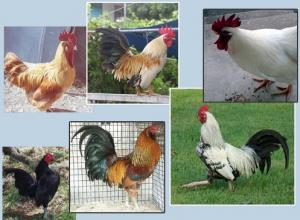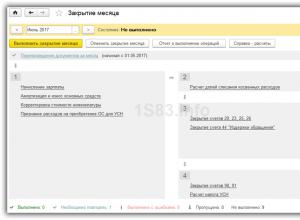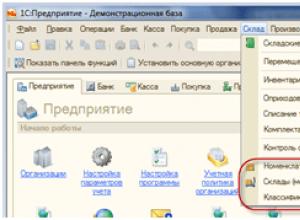Vowels and consonants letters and sounds. Vowels and consonants letters and sounds Vowel letters and sounds
What is the difference between vowels and consonants and letters and sounds? What rules do they obey? How are the hardness and softness of sounds and letters indicated? You will receive answers to all these questions in this article.
General information about vowels and consonants
Vowels and consonants represent the basis of the entire Russian language. After all, with the help of their combinations, syllables are formed that form words, expressions, sentences, texts, etc. That is why quite a lot of hours are devoted to this topic in high school.
and sounds in Russian
A person learns what vowels and consonants are in the Russian alphabet already from the first grade. And despite the apparent simplicity of this topic, it is considered one of the most difficult for students.
So, in the Russian language there are ten vowel letters, namely: o, i, a, y, yu, ya, e, e, u, e. During their immediate pronunciation, you can feel how air passes freely through the oral cavity. At the same time, we hear our own voice quite clearly. It should also be noted that vowel sounds can be drawn out (a-a-a-a, uh-uh-uh, i-i-i-i-i, u-u-u-u-u and so on ).
Features and letters
Vowels are the basis of a syllable, that is, they are the ones who organize it. As a rule, Russian words have as many syllables as vowels themselves. Let's give a clear example: u-che-ni-ki - 5 syllables, re-bya-ta - 3 syllables, he - 1 syllable, o-no - 2 syllables, and so on. There are even words that consist of only one vowel sound. Usually these are interjections (A!, Oh!, Oooh!) and conjunctions (and, a, etc.).

Endings, suffixes and prefixes are very important topics in the Russian Language discipline. After all, without knowing how such letters are written in a particular word, it is quite problematic to compose a literate letter.
Consonants and sounds in Russian
Vowels and consonants letters and sounds vary significantly. And if the first ones can be easily pulled out, then the latter ones are pronounced as briefly as possible (except for hissing ones, since they can be pulled out).
It should be noted that in the Russian alphabet the number of consonant letters is 21, namely: b, v, g, d, zh, z, j, k, l, m, n, p, r, s, t, f, x, ts, h, w, shch. The sounds they denote are usually divided into dull and voiced. What is the difference? The fact is that during the pronunciation of voiced consonants, a person can hear not only the characteristic noise, but also his own voice (b!, z!, r!, etc.). As for the deaf, there is no way to pronounce them loudly or, for example, shout. They only create a kind of noise (sh-sh-sh-sh-sh, s-s-s-s-s, etc.).
Thus, almost everything is divided into two different categories:
- voiced - b, c, d, d, g, z, j, l, m, n, r;
- deaf - k, p, s, t, f, x, c, ch, sh.
Softness and hardness of consonants
Not everyone knows, but vowels and consonants can be hard and soft. This is the second most important feature in the Russian language (after voicedness and voicelessness).

A distinctive feature of soft consonants is that during their pronunciation the human tongue takes a special position. As a rule, it moves slightly forward, and its entire middle part rises slightly. As for when pronouncing them, the tongue is pulled back. You can compare the position of your speech organ yourself: [n] - [n’], [t] - [t’]. It should also be noted that voiced and soft sounds sound slightly higher than hard sounds.
In the Russian language, almost all consonants have pairs based on softness and hardness. However, there are also those who simply do not have them. These include hard ones - [zh], [sh] and [ts] and soft ones - [th"], [h"] and [sh"].
Softness and hardness of vowel sounds
Surely few people have heard that the Russian language has soft vowels. Soft consonants are sounds quite familiar to us, which cannot be said about the above-mentioned ones. This is partly due to the fact that in secondary school practically no time is devoted to this topic. After all, it is already clear with the help of which vowels the consonants become soft. However, we still decided to dedicate you to this topic.
So, those letters that are capable of softening the consonants preceding them are called soft. These include the following: i, e, i, e, yu. As for letters such as a, y, y, e, o, they are considered hard because they do not soften the consonants in front. To see this, here are a few examples:

Indication of the softness of consonant letters during phonetic analysis of a word
Phonetics studies the sounds and letters of the Russian language. Surely, in high school you were asked more than once to make a word. During such an analysis, it should be sure to indicate whether it is separately considered or not. If yes, then it must be designated as follows: [n’], [t’], [d’], [v’], [m’], [p’]. That is, at the top right next to the consonant letter before the soft vowel, you need to put a kind of dash. The following soft sounds are marked with a similar icon - [th"], [h"] and [w"].
The letters of the Russian alphabet are divided into vowels and consonants. There are 10 vowel letters, these are A E E I O U Y Y E Y YA. Consonants 21 - B C D D F G H J K L M N P R S T F X C Ch Sh Sh. There are 33 letters in total.
Letters Kommersant And b are neither vowels nor consonants.
Spend time with your child in an interesting and useful way. We wish you success. 



How to play with your child using cards with letters?
Game number 1. Name the letter.
Before you start playing this game, introduce your child to a few letters.
You show your child a card with a letter, and he says which letter is written. For the correct answer, the child receives a chip. At the end of the game there is a prize. Please note that vowels are written in red and consonants in blue.
Tell your child that sounds are vowels and consonants. Vowel sounds are easy to sing, shout, and pronounce. There is nothing in the mouth - neither lips, nor tongue. Let the child guess what vowel sound is in the words: poppy, forest, cat, house, etc.
And consonants. When pronouncing them, something constantly gets in the way in the mouth - either the lips or the tongue. Play, let the child name the consonants he hears: day, meadow, juice, poppy, etc.
Use this game to learn all the letters of the alphabet.
Game No. 2. Name words starting with the given letter.
Offer any letter that the baby knows, and take turns saying words starting with that letter. Now let the child choose the letter, come up with words again, and continue in the same way.
Game No. 3. Who says that?
Before starting the game, choose one card with a letter that begins with a consonant sound (for example, m). Next to this letter, place the letter representing the vowel sound (for example, “a”).
At first, you shouldn’t push your child and insist that he read more syllables. Focus your attention on the question: “Who says that?” The child must answer which animal makes such a voice.
For each correct answer, give a chip. Over time, the game can be played in a group of children and a competition can be organized to see who can name the proposed syllables faster and more correctly.
Game number 4. Change the vowel.
In this game, the first letter, the consonant, remains unchanged, but the letters that represent the vowel sound change. For example: ma, mo, mu, mi, me, we, me. Then the first letter can be replaced (the child can choose the letter himself) and continue reading.
Game number 5. Change the consonant.
In this game, the first letter, the vowel, remains unchanged, but the letters that represent the consonant sound change. For example: am, an, ad, av, ash, ar, at. Then the first letter can be replaced (the child can choose the letter himself) and continue reading.
Game number 6. Funny letter combinations.
This game is perhaps the most difficult at this stage of learning, since the child needs to read letter combinations that consist only of consonant sounds (fl, zv, kr, sl, st, br, gl, pl, hl, zm, kr, dv, sk, kv). To interest your child, invite him to choose the funniest letter combination from those that he reads.
Game No. 7. Create a syllable.
Using letter cards, invite your child to write the syllable you name. For a correctly completed task, the child receives a chip.
You can organize a competition with prizes in a group of children. The first one to create a syllable will receive a chip. At the end of the game, a winner is selected based on the number of chips received and receives a prize.
Game number 8. Put the word together.
Using cards with letters, you need to form a word of three, and later of four or five letters, invented by your playing partner. For example, you named the word “garden”, and the child must put it together from letters. Then, on the contrary, the child names a three-letter word, and you add it up. Be sure to ask your child to check if you completed the task correctly. For fun and to check your attentiveness, sometimes make mistakes. Let the child identify them. Each correctly written word is awarded a chip. The one who collects the most chips wins.
Bright, colored cards with letters of the Russian alphabet.

































- A a a
- B b b b b
- In in ve
- G g g
- D d d e
- E e e
- Yo yo yo
- Zhe zhe
- Z ze ze
- And and and
- Thy and short
- K k ka
- L l el
- Mm um
- N n en
- Ooo
- P p pe
- R r er
- S with es
- T t teh
- U u u
- F f ef
- X x ha
- Ts ts tses
- Ch h wh
- Sh sh sha
- Shch shcha
- ъ hard sign
- s s
- b soft sign
- Uh uh
- Yu Yu Yu
- I I I
| 42 sounds | |||||
|---|---|---|---|---|---|
| 6 vowels | 36 consonants | ||||
| [a] [i] [o] [y] [s] [e] | Doubles | Unpaired | |||
| Drums | Unstressed | Voiced | Deaf | Voiced | Deaf |
| [b] [b"] [in] [in"] [g] [g"] [d] [d"] [and] [z] [z"] | [n] [n"] [f] [f"] [k] [k"] [t] [t"] [w] [s] [s"] | [th"] [l] [l"] [mm"] [n] [n"] [r] [r"] | [x] [x"] [ts] [h"] [sch"] |
||
| Doubles | Unpaired | ||||
| Solid | Soft | Solid | Soft | ||
| [b] [V] [G] [d] [z] [To] [l] [m] [n] [P] [R] [With] [T] [f] [X] | [b"] [V"] [G"] [d"] [z"] [To"] [l"] [m"] [n"] [P"] [R"] [With"] [T"] [f"] [X"] | [and] [ts] [w] | [th"] [h"] [sch"] |
||
How do letters differ from sounds?
Sound is elastic vibrations in any medium. We hear sounds and can create them, among other things, with the help of the speech apparatus (lips, tongue, etc.).
A letter is a symbol of the alphabet. It has a capital (excl., ь and ъ) and lowercase version. Often a letter is a graphic representation of the corresponding speech sound. We see and write letters. To ensure that the writing is not affected by the peculiarities of pronunciation, spelling rules have been developed that determine which letters should be used in the word in question. The exact pronunciation of a word can be found in the phonetic transcription of the word, which is shown in square brackets in dictionaries.
Vowels and sounds
Vowel sounds (“glas” is the Old Slavonic “voice”) are the sounds [a], [i], [o], [u], [s], [e], in the creation of which the vocal cords are involved, and on the way no barrier is erected to the exhaled air. These sounds are sung: [aaaaaaa], [iiiiiiiii] ...
Vowel sounds are designated by the letters a, e, e, i, o, u, y, e, yu, i. The letters e, e, yu, i are called iotized. They denote two sounds, the first of which is [th"], when
- are the first in the phonetic word e le [y" e ́l"e] (3 letters, 4 sounds) e sche [th" and ш"о́] (3 letters, 4 sounds) еж [й" о ́ш] (2 letters , 3 sounds) Yu la [y" u ́l"a] (3 letters, 4 sounds) I block [y" a ́blaka] (6 letters, 7 sounds) I ichko [y" and ich"ka] (5 letters, 6 sounds)
- follow after the vowels birdie d [pt "itsy" e ́t] (7 letters, 8 sounds) ee [yiy" o ́] (2 letters, 4 sounds) kayu ta [kai" u ́ta] (5 letters, 6 sounds) blue [with "in" a] (5 letters, 6 sounds)
- follow after ь and ъ е зд [вй" е ́ст] (5 letters, 5 sounds) rise m [fall" о ́м] (6 letters, 6 sounds) lyu [л"й" у ́] (3 letters, 3 sounds ) wings [wing "th" a] (6 letters, 6 sounds)
The letter and also denotes two sounds, the first of which is [th"], when
- follows ь nightingale [salav "й" and ́] (7 letters, 7 sounds)
In a word, vowel sounds that are emphasized during pronunciation are called stressed, and those that are not emphasized are called unstressed. Stressed sounds are most often both heard and written. To check which letter needs to be placed in a word, you should select a single-root word in which the desired unstressed sound will be stressed.
Running [b"igush"] - running [b"ek] mountain [gara] - mountains [mountains]
Two words united by a single accent make up one phonetic word.
To the garden [fsat]
There are as many syllables in a word as there are vowels. The division of a word into syllables may not correspond to the division during hyphenation.
e -yo (2 syllables) to -chka (2 syllables) o -de -va -tsya (4 syllables)Consonants and sounds
Consonant sounds are sounds that create an obstruction in the path of exhaled air.
Voiced consonants are pronounced with the participation of the voice, and voiceless consonants are pronounced without it. The difference is easy to hear in paired consonants, for example, [p] - [b], when pronounced, the lips and tongue are in the same position.
Soft consonants are pronounced with the participation of the middle part of the tongue and are indicated in transcription by an apostrophe " what happens when consonants
- are always soft [th"], [ch"], [sch"] ay [ay" ] (2 letters, 2 sounds) ray [ray" ] (3 letters, 3 sounds) bream [l "esch" ] (3 letters, 3 sounds)
- follow before the letters e, e, i, yu, i, b (excl., always hard [zh], [ts], [sh] and in borrowed words) mel [m "el"] (4 letters, 3 sounds) aunt [t"ot"a] (4 letters, 4 sounds) people [l"ud"i] (4 letters, 4 sounds) life [zh yz"n"] (5 letters, 4 sounds) circus [ts yrk] (4 letters, 4 sounds) neck [sh eyya] (3 letters, 4 sounds) tempo [t emp] (4 letters, 4 sounds)
- come before soft consonants (some cases) pancake [bl"in" ch"ik]
Otherwise, consonant sounds will predominantly be hard.
Sibilant consonants include the sounds [zh], [sh], [h"], [sh"]. Speech therapists rule their pronunciation penultimately: the tongue must be strong and flexible to resist exhaled air and be held against the roof of the mouth in the shape of a cup. The last ones in line are always vibrating [p] and [p"].
Do schoolchildren need phonetics?
Without dividing into vowels, consonants, stressed and unstressed, of course, it is impossible. But the transcription is clearly too much.
Speech therapists are required to know phonetic analysis of words, and it can probably be useful to foreigners.
For students (from 1st grade!) who have not yet mastered the rules of spelling, a fairly in-depth study of phonetics only hinders, confuses and contributes to incorrect memorization of the spelling of words. It is “back” that the child will associate with the pronounced “run”.
Latest site materials
Children's creativity

Aramaic language tutorial
The Aramaic script was used to write the text of the language of the same name, which was used for trade transactions in the Middle East from about 1000 BC. e. and before 1000 AD. e. It comes from the Phoenician script. Since evolution from one to another b
Holidays

How do different properties of living things manifest themselves at different levels of organization?
Metabolism. All living organisms have the ability to extract, transform and use energy from the environment, either in the form of nutrients or in the form of solar radiation. They return decomposition products to the external environment and transform
Psychology

Christopher Chabris and Daniel Simons
We all believe that we can see what is in front of us, accurately recall important events from the past, recognize the limits of our knowledge, and correctly determine cause-and-effect relationships. However, these intuitive beliefs are
Why

Decommissioning OS in 1 from 8.3 step by step. Accounting for fixed assets. Other reference books and documents from the section "Fixed assets"
Fixed assets are those assets that are used as labor tools for more than 12 months and cost more than 100,000 rubles. Accounting for fixed assets in 1C 8.3 is 100% automated. First, in 1C Accounting for the operating system, it is drawn up. Further their prin
New Year

The head of “Prosto Moloko” Marat Muratov spoke about the completion of bankruptcy of the agricultural holding “Vamin”
"1C:Enterprise 8" helped the largest agricultural enterprise in Tatarstan "Set Ile" to improve the implementation of the production plan by 30% Specialists of the company "1C: First BIT" (Kazan) completed the implementation of the "1C: Agricultural Accounting" system
Preschoolers

Entering regulatory reference information 1C enterprise 8
/ Inventory accounting Regulatory and reference information: inventory accounting subsystem All regulatory and reference information that is used to display inventory transactions can be divided into two groups: Objects of analytical accounting of inventory transactions
